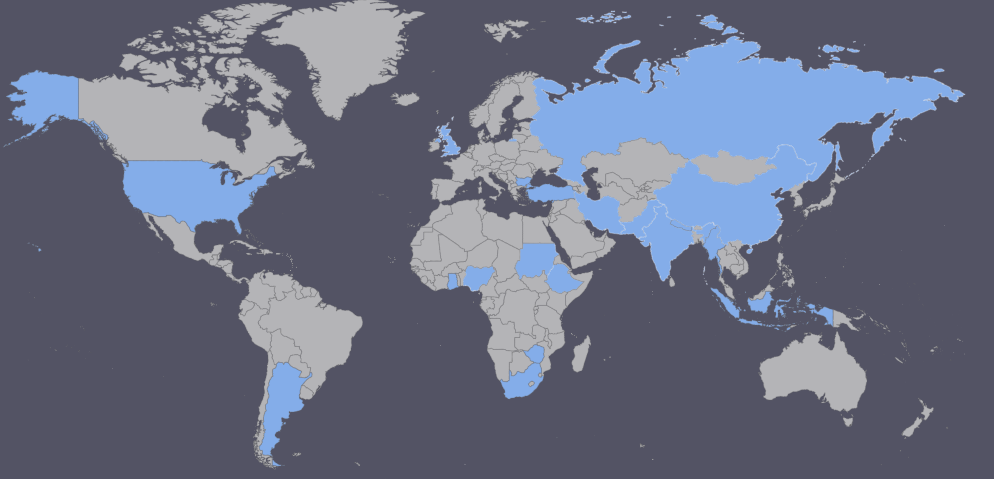Evaluating the Effects of Land Use and Land Cover Change on Watershed Surface Runoff: Case of Abelti Watershed, Omo Basin, Ethiopia
Keywords:
Abelti watershed, Earth Resources Development Assessment System, Land Use/Land Cover, Surface runoff, SWAT modelAbstract
This study assessed the effects of land use/land cover change on surface runoff in Abelti watershed located at upper Omo river basin, Ethiopia using Soil and Water Assessment Tool and satellite land use maps of 2000, 2010 and 2017 which were processed using Earth Resources Development Assessment System, Imagine 2015 and ArcGIS10.1 software by the method of supervised classification. There was significant change surface runoff in the watershed due to spatial and temporal change of land use/land cover change. Surface runoff was very high during wet seasons and very low during dry seasons at different parts of the watershed during the study periods. Accuracy assessment of land use classification using confusion matrix and kappa coefficient for 2000, 2010 and 2017 maps indicated an overall accuracy of 86.04%, 90.75% and 89.71% and kappa index of 0.82, 0.88 and 0.86 respectively and image classification accuracy was almost in strong agreement. The model performance was found very well according to the three objective functions of R2, Nash, Sutcliffe Efficiency and Percent Bias with values of 0.79, 0.78 and 6.3% for calibration and 0.92, 0.85 and 4.1% for validation periods respectively. Land cover types contribute minimum and maximum surface runoff based on the interception capacity of each land cover types in the watershed. Along with land use/land cover changes, considerable consequences were obtained in the surface runoff of the watershed which was increased from 2000 to 2010 by 19.963% but decreased from 2010 to 2017 by 3.898% due to change of land use/land cover in the watershed. Therefore, surface runoff was highly affected by land cover types and increased when the interception was less because of the forest cover decreased, surface runoff decreased when the forest cover become increased.
References
Alemu, B., 2015. The Effect of Land Use Land Cover Change on Land Degradation in the Highlands of Ethiopia. Journal of Environment and Earth Science 5 (1), 2015 (1-10).
Anderson, J.R., Hardy, E.E., Roach, J.T., Witmer, R.E., 1976. A Land Use and Land Cover Classification System for Use with Remote Sensor Data. Geological Survey Professional Paper 964, Unites States Government Printing Office, Washington DC, USA.
Chalachew, A., Gudina, L., Debela, H., 2015. Analysis of land use/cover dynamics in Jimma city, Southwest Ethiopia: an application of satellite remote sensing. Ethiopian Journal of Applied Science and Technology 6 (2), 23-33.
FAO, 1995. Digital Soil Map of the World and Derived Soil Properties, (version 3.5) CD ROM. Food and Agriculture
Organization of the United Nations, Rome, Italy.
Gayathri, K.D., Ganasri, B.P., Dwarakish, G.S., 2015. A Review on Hydrological Models. International Conference on Water Resources Coastal and Ocean Engineering (ICWRCOE 2015). Aquatic Procedia 4 (2015), 1001-1007.
Githu, F.W., 2007. Assessing the impacts of environmental change on the hydrology of the Nzoia catchment, in the Lake Victoria Basin. PhD Thesis, Department of Hydrology and Hydraulic Engineering, Faculty of Engineering, Vrije Universities Brussel, Belgium.
Gupta, H., Sorooshian, S., Yapo, P., 1999. Status of automatic calibration for hydrologic models: Comparison with multilevel expert calibration. Journal of Hydrologic Engineering 4 (2), 135-143. Doi: 10.1061/(ASCE)1084-0699(1999)4:2(135).
Hadgu, K.M., 2008. Temporal and spatial changes in land use patterns and biodiversity in relation to farm productivity at multiple scales in Tigray, Ethiopia. PhD Thesis Wageningen University, Wageningen, the Netherlands.
James, L.D., Burges, S.J., 1982. Selection, Calibration, Testing of Hydrologic Models. In: Hydrologic Modeling of Small Watersheds, C.T. Haan, H.P. Johnson and D.L. Brakensiek (Editors). ASAE Monograph, St. Joseph, Michigan, 437-472 pp.
Moriasi, D.N., Arnold, J.G., Van Liew, M.W., Bingner, R.L., Harmel, R.D., Veith, T.L., 2007. Model evaluation guidelines for systematic quantification of accuracy in Watershed simulations. American Society of Agricultural and Biological Engineers 50 (3), 850-900. Doi: 10.13031/2013.23153.
Palmer, M., 2002. Land Use/Land Cover Classification of Landsat 7 imagery on a Portion of Auglaize River Watershed for Input to SWAT Model. University of Toledo, Department of Geography and Planning, Toledo, USA.
RichardWoodroof and Associates, 1996. Omo-Gibe River basin Integrated Development Master Plan Study Final Report, Volume VI, Water Resources Surveys and Inventories, Ministry of Water Resources of the Federal Democratic Republic of Ethiopia, Addis Ababa, Ethiopia.
Rientjes, T.H.M., Haile, A.T., Mannaerts, C.M.M., Kebede, E., Habib, E., 2010. Changes in land cover and stream flows in Gigel Abbay Catchment, Upper Blue Nile Basin - Ethiopia. Hydrology and Earth System Sciences Discussions 7, 9567-9598.
Samuel, K.B., Abdella, K., Santosh, M.P, 2018. Impact of Land Use/Land Cover Change on Watershed Hydrology: A Case Study of Upper Awash Basin, Ethiopia. Ethiopian Journal of Water Science and Technology 1 (1), 3-26.
Santhi, C., Arnold, J., Williams, J., Dugas, W., Srinivasan, R., Hauck, L., 2001. Validation of the SWAT model on a large river basin with point and nonpoint sources. Journal of the American Water Resources 37 (5), 1169-1188.
Susana, M.V., Uzay, K., Sousa, J.M., 2010. Cohen’s Kappa Coefficient as a Performance Measure for Feature Selection. IEEE International Conference on Fuzzy Systems (FUZZIEEE), 18-23 July 2010, Barcelona, Spain.
Wakjira, T., Tamene, A., Dawud, T., 2016. Land use land cover change Analysis using Multi Temporal Landsat data in Gilgel Gibe, Omo Gibe Basin, Ethiopia. International Journal of Sciences and Technology 5 (7), 309-323.
Downloads
Published
Issue
Section
License
Copyright (c) 2022 Alemshet Belayneh YISMAW

This work is licensed under a Creative Commons Attribution-NonCommercial-NoDerivatives 4.0 International License.
The authors keep the copyrights of the published materials with them, but the authors are aggee to give an exclusive license to the publisher that transfers all publishing and commercial exploitation rights to the publisher. The puslisher then shares the content published in this journal under CC BY-NC-ND license.



